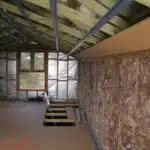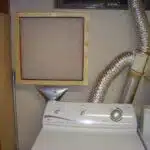Installing a window is one of those home improvement projects that can seem daunting at first, but with the right tools and knowledge, it can be a relatively straightforward process. Whether you’re looking to replace an old or damaged window, update your home’s style, or simply save money by doing it yourself, installing a window is a project that can be tackled by even novice DIYers.
In this article, we’ll walk you through the step-by-step process of how to install a window yourself. From measuring and preparing the opening to installing the frame and sealing the edges, we’ll cover all the essential details you need to know to successfully complete this project. With our guidance and some patience and effort on your part, you’ll soon have a beautiful new window that not only enhances your home’s curb appeal but also provides better energy efficiency and increased comfort in your living space.
Choosing The Right Window For Your Home
Choosing the right window for your home is a crucial decision that requires careful consideration. Before making your selection, it’s important to understand the different window styles available in the market. Some popular options include double-hung, casement, sliding, and awning windows. Each of these styles has its unique features and advantages, so it’s essential to assess your needs and preferences carefully.
Once you have identified the style that best suits your requirements, the next step is to compare different window materials. There are several options available, including wood, vinyl, fiberglass, and aluminum. Wood windows offer a classic look but require more maintenance than other materials. Vinyl windows are low-maintenance and energy-efficient but may not be as durable as other materials. Fiberglass windows are sturdy and energy-efficient but can be expensive. Aluminum windows offer durability and low maintenance but may not provide good insulation.
Ultimately, choosing the right window comes down to finding a balance between aesthetics, functionality, durability, and budget. Take time to evaluate all options available in terms of style and material before making a final decision. Your choice of window will not only impact your home’s curb appeal but also influence its energy efficiency and overall comfort level. In the next section, we will discuss how to measure the opening for your new window accurately.
Measuring The Opening For Your Window
To ensure that your window fits perfectly, measuring the opening accurately is crucial. Measuring accuracy will prevent you from having to make costly adjustments or replace the window entirely. Common measurement mistakes include measuring only one side of the window and assuming all sides are equal, measuring from the interior trim instead of the rough opening, and not accounting for any obstructions such as pipes or electrical outlets.
Before taking measurements, prepare your tools by gathering a tape measure, level, pencil, and paper. Start by measuring the width of the rough opening at three different points: top, middle, and bottom. Record these measurements and use the smallest one as your final width measurement. Next, measure the height at three different points: left side, center, and right side. Again, record these measurements and use the smallest one as your final height measurement.
It’s important to take your time with measurements to avoid mistakes that could delay installation or result in an improperly sized window. Remember to measure twice before cutting once! Once you have accurate measurements recorded on paper, you can move on to gathering the necessary tools and materials for installation without feeling uncertain about whether or not you measured correctly.
Gathering The Necessary Tools And Materials
Before starting the installation process, it is essential to gather all the required tools and materials. Having everything you need on hand will save you time and frustration while installing your window. The necessary tools include a measuring tape, screwdrivers, utility knife, pry bar, level, caulk gun, drill or driver, and safety glasses. The materials needed are new window units with screws and shims for installation.
To ensure a seamless installation process, it is crucial to purchase high-quality windows that meet your needs. Cost considerations should be taken into account when purchasing windows; however, cheaper options may result in common mistakes like drafts or poor insulation. Opting for energy-efficient windows can help you save money on heating and cooling bills in the long run.
When selecting a window style or brand, it’s important to research customer reviews and ratings carefully. This will give you an idea of product quality and reliability. Remember that having all the necessary equipment is not enough; you must also have a basic understanding of how to use each tool safely.
Next up: removing the old window.
Removing The Old Window
After gathering the necessary tools and materials, it’s time to remove the old window. Did you know that according to a recent survey, replacing old windows with energy-efficient ones can save homeowners up to 15% on their energy bills? Not only will replacing your old window save you money in the long run, but it will also improve the aesthetics of your home.
Before removing the old window, safety precautions must be taken. Wear protective gloves and eyewear to protect yourself from broken glass. If possible, have a friend or family member help you with the removal process. Start by removing any exterior trim or caulking around the window frame. Once the trim is removed, carefully loosen any screws or nails holding the window frame in place.
Disposing of the old window is also an important step in this process. Do not throw away broken glass in your regular trash bin as it can pose a risk to sanitation workers. Instead, wrap up broken glass in newspaper or cardboard and place it in a separate container labeled “broken glass.” The remaining parts of the old window can be recycled at your local recycling center or brought to a construction waste disposal facility. With safety precautions taken and proper disposal methods used, you’re now ready to move on to preparing the window opening for installation.
Transition: Now that you have safely removed and disposed of your old window, it’s time to prepare for installing your new one by properly preparing the opening.
Preparing The Window Opening
Before installing a window, it is important to prepare the window opening. Properly preparing the opening can ensure that the window fits correctly and functions properly. The first step in this process is to measure the size of the opening using measuring tools such as a tape measure or ruler.
Once you have measured the size of the opening, it is important to prepare the window frame. This involves removing any old caulking or sealant from around the edges of the frame and cleaning it thoroughly. If there are any gaps or holes in the frame, they should be filled with a high-quality caulk.
After preparing the window frame, it is important to inspect it for any damage or defects. Any damage should be repaired before continuing with installation. With proper preparation, your window will fit perfectly and function as intended for years to come.
- Check for any signs of rot or decay on the surrounding woodwork.
- Sand down any rough edges around the perimeter of your opening.
- Clean all surfaces inside and out with soap and water to remove dirt and debris.
By taking these steps, you can ensure that your window will be properly installed and function as intended. The next section will cover how to install the window frame into your prepared opening without damaging your newly prepared surface.
Installing The Window Frame
To properly install a window, one must first choose the right materials for the frame. The most common materials used for window frames are wood and vinyl. Wooden frames offer a classic look but require more maintenance than their vinyl counterparts, which are low-maintenance and energy-efficient. When selecting the material for the frame, consider factors such as durability, cost, and aesthetic appeal.
Once you have chosen the appropriate material, it is time to measure accurately for the frame. To do this, measure the height and width of the opening in three places: at the top, middle, and bottom. Use the smallest measurement to ensure that your frame will fit properly. It is also important to check that your opening is square by measuring diagonally from opposite corners; if these measurements are equal, your opening is square.
With proper measurements in hand and materials selected, it’s time to move on to installing the window frame itself. To start this process, place shims around the perimeter of the opening to create an even surface on which to mount your new frame. Insert your pre-assembled window into this newly constructed framework and make sure it fits snugly before securing it in place with screws or nails. With these steps completed successfully, you’ll be well on your way to having a professionally installed window that will last for years to come.
As you progress through each step of installing your own window, taking care with each detail will pay off in both aesthetics and longevity. Choosing high-quality materials such as vinyl or wood frames can ensure durability as well as beauty over time. Accurate measurements will help guarantee a precise fit while taking steps like using shims can make installation much easier overall. Moving forward into securing your newly installed window into place requires continued attention to detail – read on for further instructions on how best to proceed!
Securing The Window In Place
Now that the window is in place, it’s time to secure it. This involves using window shims to hold the window in place and caulking techniques to seal any gaps between the frame and the wall.
First, begin by inserting shims around the perimeter of the window frame, starting at the bottom and working your way up. Make sure they’re evenly spaced and snug against the frame. Use a level to ensure that the window is plumb and level before tightening any screws or nails.
Next, apply a bead of caulk around the outside edge of the window frame where it meets the wall. Smooth out any excess with a caulk smoothing tool or your finger. Repeat this process on the inside of the window as well.
- One important tip when using window shims is to avoid over-tightening screws or nails, as this can distort or damage both the shims and frame.
- For best results with caulking, use a high-quality silicone-based sealant that will remain flexible over time.
- Consider adding weatherstripping along any remaining gaps between the sash and frame for added insulation benefits.
With these steps complete, your newly installed window should be securely in place and sealed against drafts and moisture. Now let’s move on to insulating and sealing the window for even greater energy efficiency.
Insulating And Sealing The Window
Now that the window is securely installed, the next step is to insulate and seal it. This process involves filling any gaps around the window frame with insulation foam or batting to prevent air leaks. Sealing the window will not only improve energy efficiency, but also reduce noise pollution and keep out dust and pests.
One of the key benefits of insulating and sealing a window yourself is cost-effectiveness. Hiring a professional to do this job can be expensive, and doing it yourself can save you a significant amount of money. In addition, by doing it yourself, you have control over the quality of materials used and can ensure that they are environmentally friendly.
Tips for insulating and sealing a window include using weatherstripping tape on any movable parts of the window, applying caulk around the edges of the frame where it meets the wall, and using foam or batting to fill larger gaps. It’s important to read product labels carefully before purchasing insulation or caulking materials to ensure you get ones that are appropriate for your specific needs.
With proper insulation and sealing, your newly installed window will provide maximum comfort in your home by keeping out unwanted drafts while reducing energy costs. The next step in this process is applying trim and caulk to give your new window a polished finish.
Applying Trim And Caulk
- Before installing a window, it is important to take the time to properly prepare the area for the job.
- Carefully measure the opening for the window and make sure the window sill is clear of any debris or dirt.
- Carefully place the window in the opening, ensuring it is level and square before securing it with screws.
- To ensure a proper seal, apply a high-grade caulk to the gap between the window and the wall.
- To finish the job, carefully apply trim around the window, and secure it with nails.
- Once the window is installed and the trim is in place, inspect the area for any gaps or cracks, and fill them with additional caulk as needed.
Preparing For Installation
Before installing a window, preparation is key to ensuring a successful and efficient installation process. It can be an overwhelming task, but with the right tools and materials, it can be done easily. The first step is to measure the size of the window opening accurately using measuring tools such as a tape measure or level. This will help you determine the size of the window frame materials needed for the project.
Once you have measured accurately, it’s time to gather the necessary materials. Window frame materials include pieces of wood or vinyl used to create a frame around the window opening. These materials are essential as they provide structural support for your window. Additionally, ensure you have enough caulk and insulation to seal any gaps around your window once installed adequately.
Finally, before beginning your installation process, ensure that there is enough space in your workspace to maneuver comfortably. Clear out any furniture or obstructions that may hinder movement during installation. With these preparations in place, you’re now ready to begin installing your new windows and achieve a beautiful finish that will transform your home’s overall aesthetic appeal!
Installing The Window
Now that you have prepared your workspace and gathered all necessary materials, it’s time to start installing the window. The first step is to place the window frame into the opening, ensuring that it is level and square. Common mistakes to avoid during this step include not checking for levelness and not securing the frame properly.
Next, apply insulation around the edges of the frame to prevent air leaks and improve energy efficiency. Safety precautions should be taken during this step, as insulation can cause skin irritation or respiratory issues if mishandled. Ensure that you wear protective gear such as gloves and a mask.
After applying insulation, it’s time to apply trim and caulk around the edges of the window frame. This will provide a finished look while also sealing any gaps between the window and wall. Again, safety precautions must be taken when using caulk as it can cause skin irritation or eye damage if not handled correctly. With these steps completed, your new windows are now ready for use!
Finishing Touches
Now that the window is securely in place, it’s time to move on to the finishing touches. One important aspect of this is choosing paint for the trim and frame. This should be done after the caulk has dried completely to ensure a smooth finish. It’s important to choose a high-quality paint that will withstand exposure to sunlight and moisture. Additionally, adding curtains or blinds can further enhance the appearance of the window while also providing privacy and light control.
When applying paint, it’s crucial to follow proper techniques such as using a primer first and applying multiple thin coats rather than one thick coat. This will ensure even coverage and prevent peeling or cracking over time. Once the paint has dried completely, it’s time to hang curtains or blinds. This should be done carefully to avoid damaging any part of the window or frame.
In conclusion, taking care with finishing touches such as choosing paint and adding curtains can greatly enhance the overall look and functionality of your new windows. By following proper techniques and safety precautions throughout the installation process, you can enjoy your new windows for years to come.
Painting Or Staining The Window Frame
Staining vs Painting Window Frames
When it comes to finishing your window frames, there are two main options: staining or painting. Both methods have their advantages and disadvantages, so it’s important to consider your specific needs before deciding which one is right for you.
Staining is a great choice for those who want to highlight the natural beauty of their wooden window frames. It can enhance the grain and texture of the wood, while also providing protection against moisture and UV rays. However, staining does require more maintenance than painting, as it may need to be reapplied every few years.
If you prefer a more customizable look for your window frames, painting might be the way to go. It allows you to choose from a wide range of colors and finishes, giving you greater control over the final appearance of your windows. Paint also provides excellent protection against weathering and wear-and-tear, making it ideal for high-traffic areas.
Best Stains for Wooden Window Frames
When choosing a stain for your wooden window frames, there are several factors to consider. First, make sure that the stain is designed specifically for use on exterior wood surfaces. Look for products that offer UV protection and are resistant to water damage. You’ll also want to choose a color that complements the style of your home and matches any existing trim or accents.
Some popular brands of stains for wooden window frames include Minwax Wood Finish Stain and Varathane Premium Fast Dry Wood Stain. These products are available in a variety of colors and finishes, making it easy to find one that suits your needs. Be sure to follow the manufacturer’s instructions carefully when applying the stain, as improper application can lead to uneven coloring or blotches.
Transition:
Now that you’ve finished staining or painting your window frame, it’s time to test it for proper operation.
Testing The Window For Proper Operation
An important part of installing a window is testing it for proper operation. According to a survey conducted by HomeAdvisor, 44% of homeowners reported issues with their windows such as leaks or difficulty opening and closing. To avoid these common issues, it’s crucial to test your window thoroughly before considering the installation process complete.
There are several testing methods you can use to ensure that your window is functioning properly. One method is checking for air leaks by holding an incense stick near the window frame and looking for any smoke movement. Another method involves spraying water on the exterior of the window and checking for any water penetration inside. Additionally, you should test the locking mechanism to make sure it works correctly and inspect the sealant around the frame for any gaps or cracks.
Common issues that may arise during testing include air drafts, water leakage, difficulty opening or closing the window, or problems with the locking mechanism. If you encounter any of these issues, it’s best to address them immediately rather than wait until they become bigger problems down the road. Contacting a professional installer or manufacturer may be necessary in some cases to ensure that your window meets industry standards and functions properly.
Now that your window has been tested and installed successfully, it’s time to move on to cleaning up and disposing of debris left over from the installation process.
Cleaning Up And Disposing Of Debris
After successfully testing the window for proper operation, it’s time to clean up the debris and dispose of it properly. Cleaning up is an essential part of any DIY project, and installing a window is no exception. Safety should always be your top priority when handling debris. Wear gloves and protective gear to prevent cuts and bruises.
Before starting the cleaning process, gather all the necessary tools you will need, including a broom, dustpan, vacuum cleaner, and garbage bags. Sweep away any small shards or debris with a broom or use a vacuum cleaner to collect them quickly. Be careful not to damage any surrounding areas while cleaning up.
Once all the debris has been cleared out of the way, it’s time to dispose of it responsibly. Choose eco-friendly methods such as recycling if possible. Check with your local recycling center for specific instructions on how to recycle glass materials. You can also reuse some materials for other DIY projects around your home. Remember that proper disposal is critical in keeping our environment clean and safe.
As important as it is to follow installation instructions carefully, troubleshooting common window installation issues may still arise even after you’ve followed every step correctly. It’s essential to know how to address these issues promptly before they cause significant problems down the line. Let’s take a look at some common window installation issues and how you can troubleshoot them effectively.
Troubleshooting Common Window Installation Issues
As with any home improvement project, installing a window can come with its fair share of challenges. One common issue that many DIYers face is dealing with uneven window frames. This can be caused by a number of factors, including settling of the foundation or walls over time. When faced with this problem, it’s important to take the necessary steps to ensure that your window fits snugly and securely in the frame.
To start, use a level to determine which parts of the frame are uneven. From there, you may need to add shims or adjust the size of the window frame itself in order to create an even surface for installation. It’s also important to make sure that all corners and edges are properly sealed to prevent air leaks and water damage. By taking these extra steps, you can ensure that your new window will not only look great but function properly as well.
Another common mistake that DIYers make during window installation is rushing through the process or skipping important steps altogether. This can lead to issues down the line such as drafts, leaks, or even structural damage if not addressed promptly. Take your time during installation and don’t be afraid to ask for help if needed. With patience and attention to detail, you can successfully install your new window without encountering any major issues.
Moving forward after your window installation is complete, it’s important to know how to maintain your new investment for years to come. In the next section, we’ll discuss some helpful tips for keeping your windows looking and functioning their best over time.
Tips For Maintaining Your New Window
After successfully installing your own window, it is important to keep it clean and well-maintained. Regular cleaning not only keeps the window looking great but also helps with energy efficiency. Dirt and debris can block sunlight, making it more difficult for warmth to enter your home during colder months. In addition, clean windows allow for better airflow, which can help reduce cooling costs during the summer.
To clean your new window, start by removing any loose dirt or debris with a soft-bristled brush or vacuum cleaner attachment. Next, mix a solution of warm water and mild soap in a bucket. Dip a soft cloth or sponge into the solution and gently scrub the window frame and glass. Be sure to rinse thoroughly with clean water and dry with a clean cloth to prevent streaking.
In addition to regular cleaning, there are other maintenance tasks you can perform to ensure optimal energy efficiency. Check for any air leaks around the window frame and seal them with weatherstripping if necessary. You may also consider adding insulating film or shades to further improve energy efficiency. By taking these steps, you can enjoy the benefits of your new window for years to come.
As important as proper maintenance is when it comes to your new window, there may be situations where calling in a professional installer is necessary. If you encounter issues such as warped frames, damaged glass or problems opening or closing the window properly, it may be time to seek expert assistance. A professional will have the tools and knowledge needed to diagnose and repair any issues effectively while ensuring that safety measures are taken into account throughout the process.
When To Call In A Professional Window Installer
When it comes to installing windows, there are many homeowners who prefer to take on the task themselves. While DIY projects can be rewarding, it’s important to recognize that there are risks involved. Before you decide to install a window yourself, it’s important to weigh the pros and cons.
When to hire a professional window installer:
- If you lack experience with DIY home improvement projects
- If the window is an awkward size or shape
- If the installation requires cutting into the wall or framing
- If the window is located in a hard-to-reach area of your home
Attempting a window installation without proper knowledge and experience can lead to costly mistakes and even safety hazards. Professional installers have the expertise and tools necessary to properly install windows, ensuring they are secure and energy-efficient.
While it may be tempting to save money by installing windows yourself, it’s important to consider all of the potential DIY risks associated with this project. In addition to risking damage to your property or injury to yourself, improperly installed windows can lead to drafts, water leaks, and other issues that can negatively impact your home’s energy efficiency and overall value.
In summary, before taking on a window installation project yourself, make sure you have the necessary skills and tools for the job. Otherwise, hiring a professional installer will ensure that your new windows are installed correctly and efficiently without risking any damage or harm in the process.
Conclusion
Installing a window yourself can be an intimidating task, but with the right tools, materials, and knowledge, it is a manageable project. Begin by selecting the appropriate window for your home and measuring the opening accurately. Gathering the necessary tools and materials will ensure that the installation process runs smoothly.
Removing the old window and preparing the opening are crucial steps in ensuring a successful installation. Careful attention to cleaning up debris and troubleshooting common issues can save time and frustration in the long run. Remember to maintain your new window regularly to prolong its lifespan. If you encounter any complications during installation, don’t hesitate to call in a professional.
As the adage goes, “measure twice, cut once.” Taking your time and being diligent in each step of the installation process will ultimately lead to a satisfactory result. By following these guidelines, you can confidently install a new window in your home and enjoy improved energy efficiency and aesthetics.
Image Credits





























